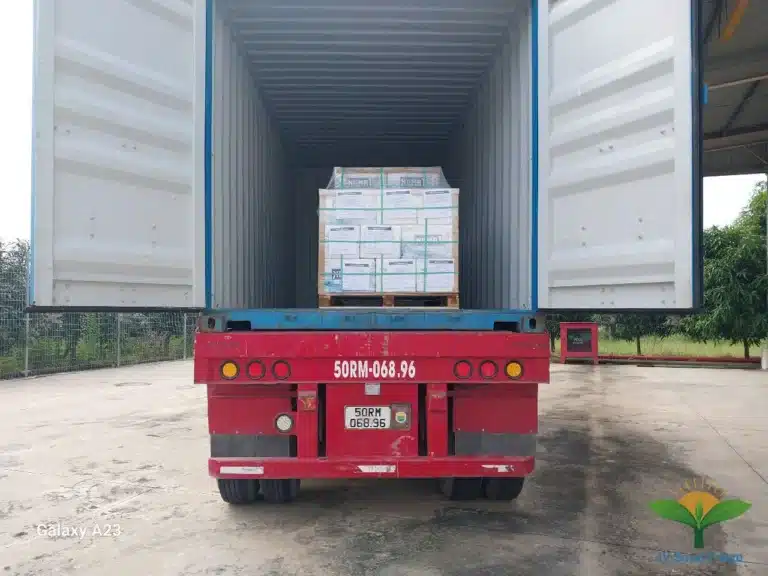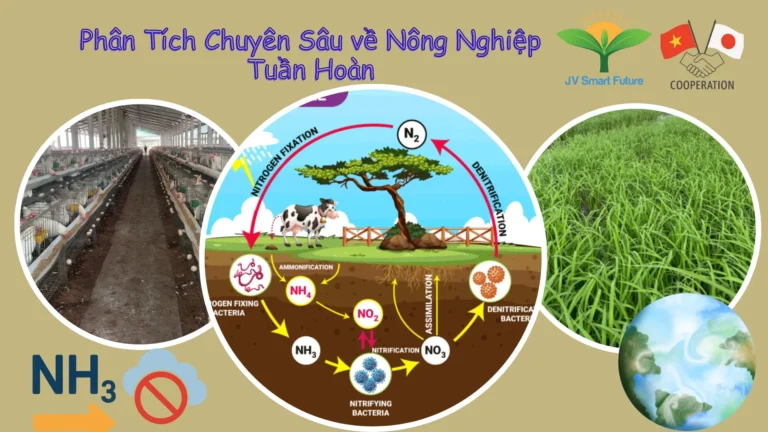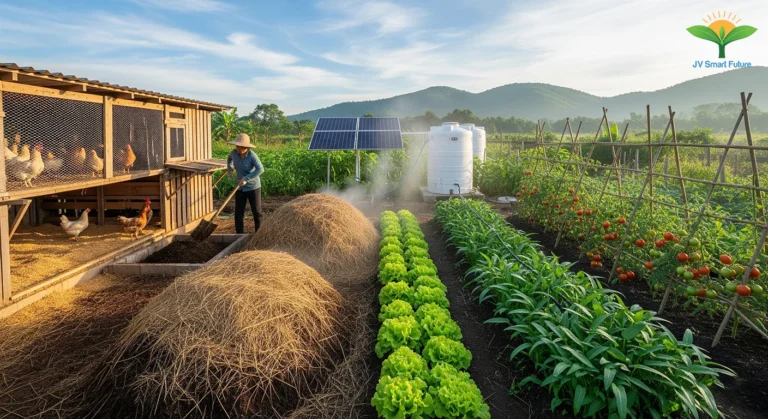A Comprehensive Solution for Dairy Farm Environmental Management: The Landmark Partnership Between JVSF and Fraser & Neave (F&N)
The global industrial-scale dairy farming sector is at a critical juncture. The pressures of food security and economic efficiency must go hand-in-hand with increasingly stringent demands for sustainability and environmental responsibility. In this context, finding an effective, comprehensive, and sustainable solution for dairy farm environmental management is no longer an option, but a vital imperative. This article provides an in-depth analysis of a landmark partnership that is shaping the future of the industry: the collaboration between the Japanese technology Organic Carbon NEMA1, supplied by JVSF, and the vision of Southeast Asia’s F&B giant, Fraser & Neave (F&N), at the F&N AgriValley mega dairy farm project in Malaysia.
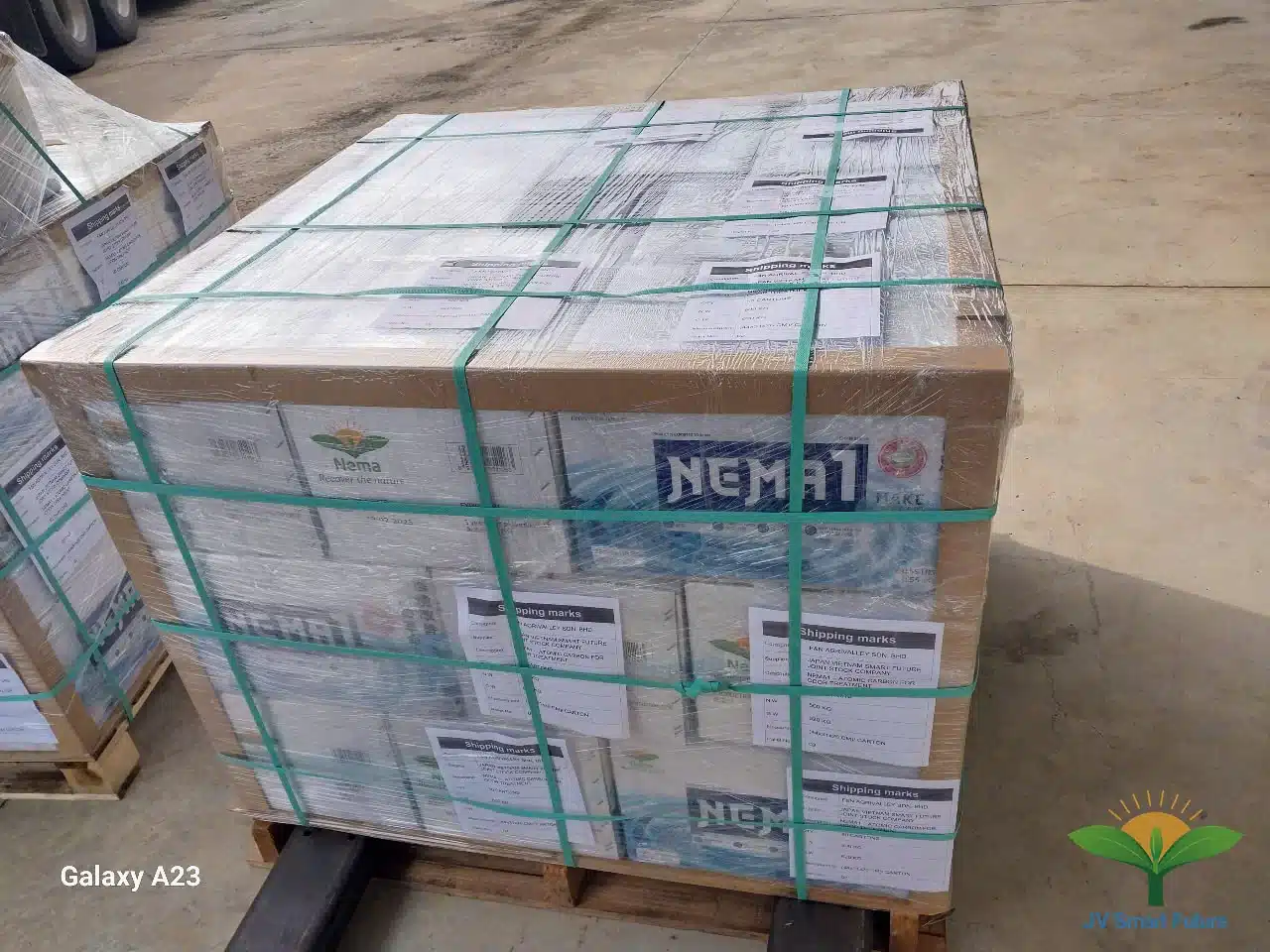
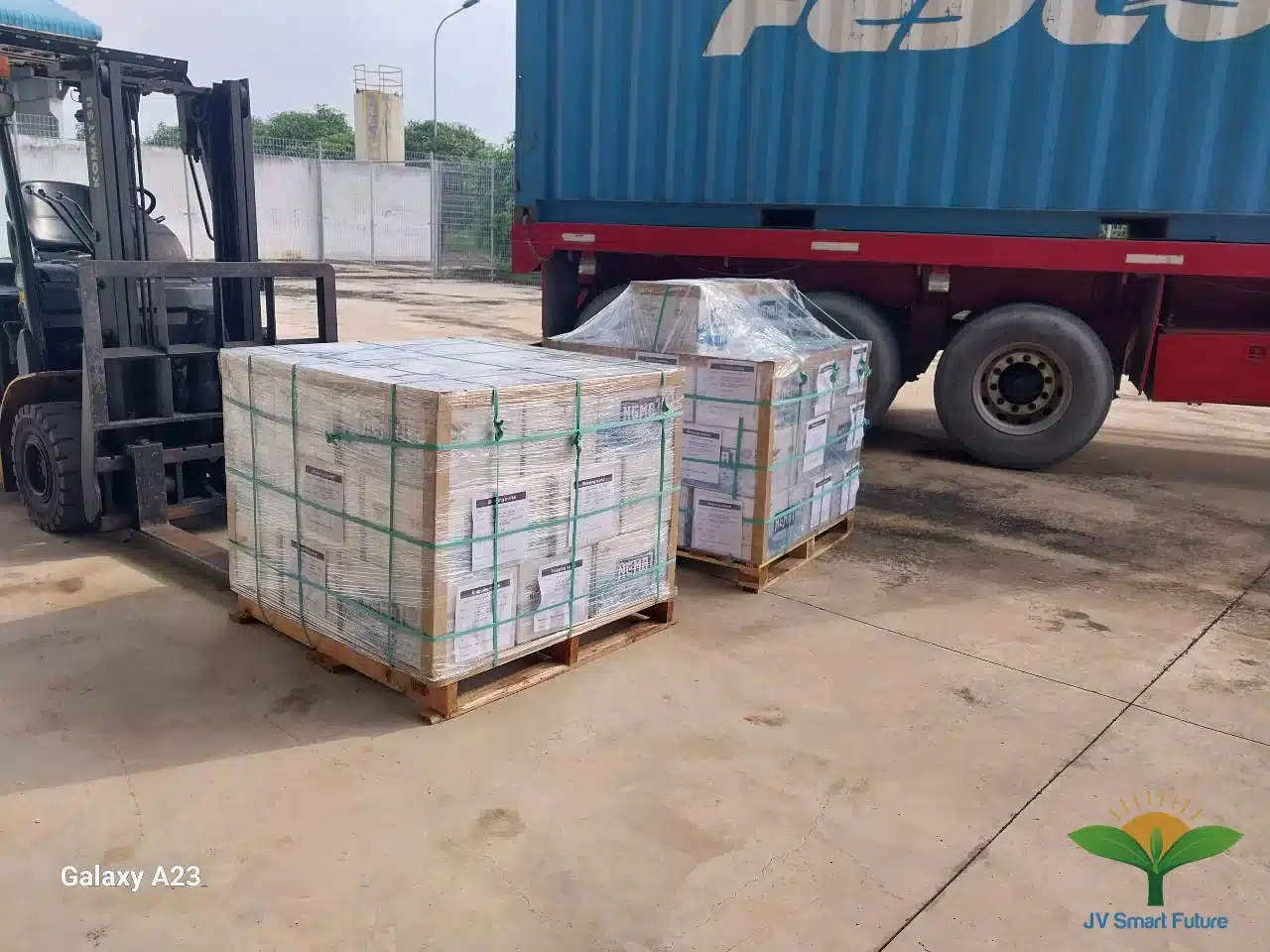
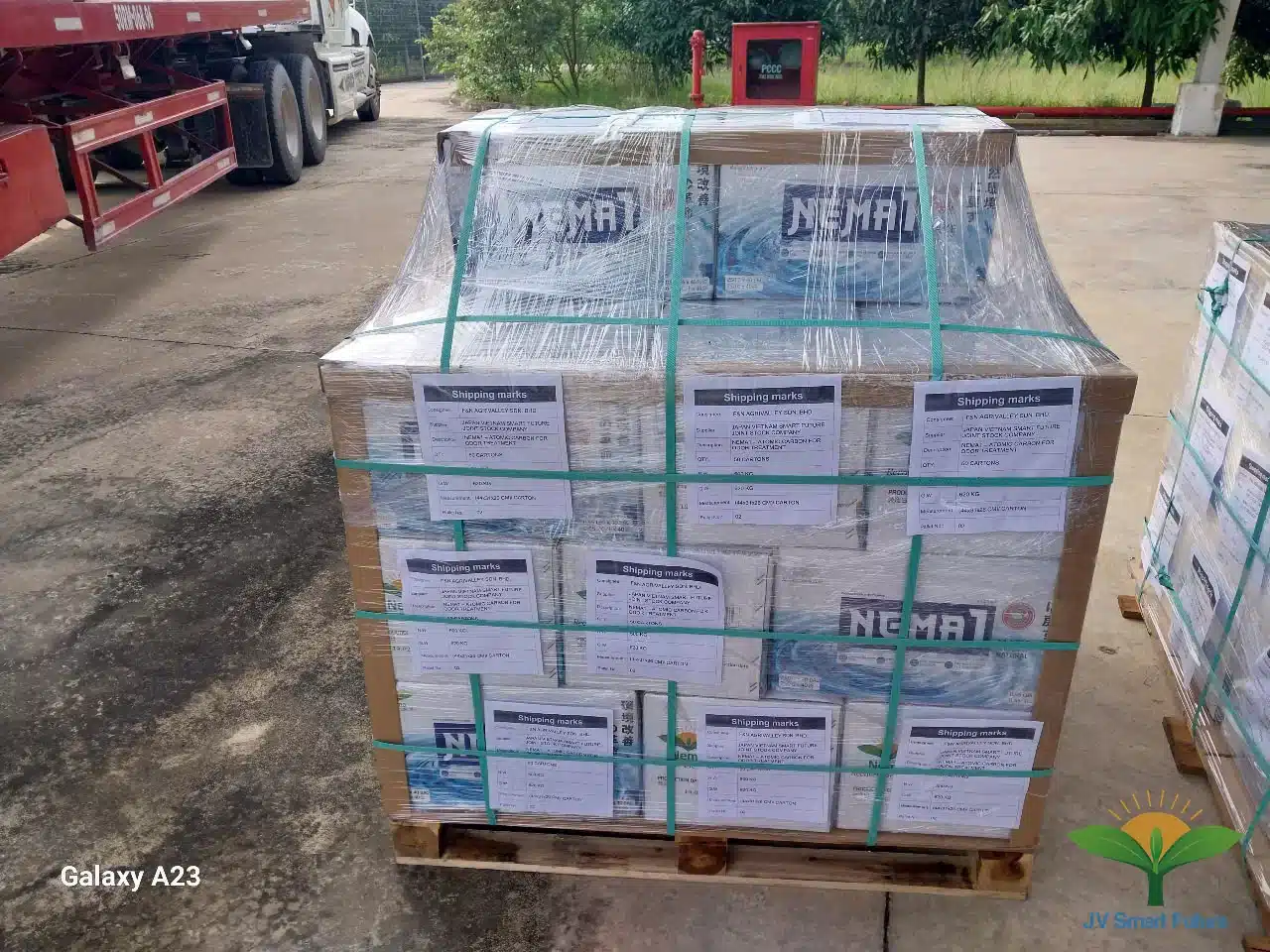
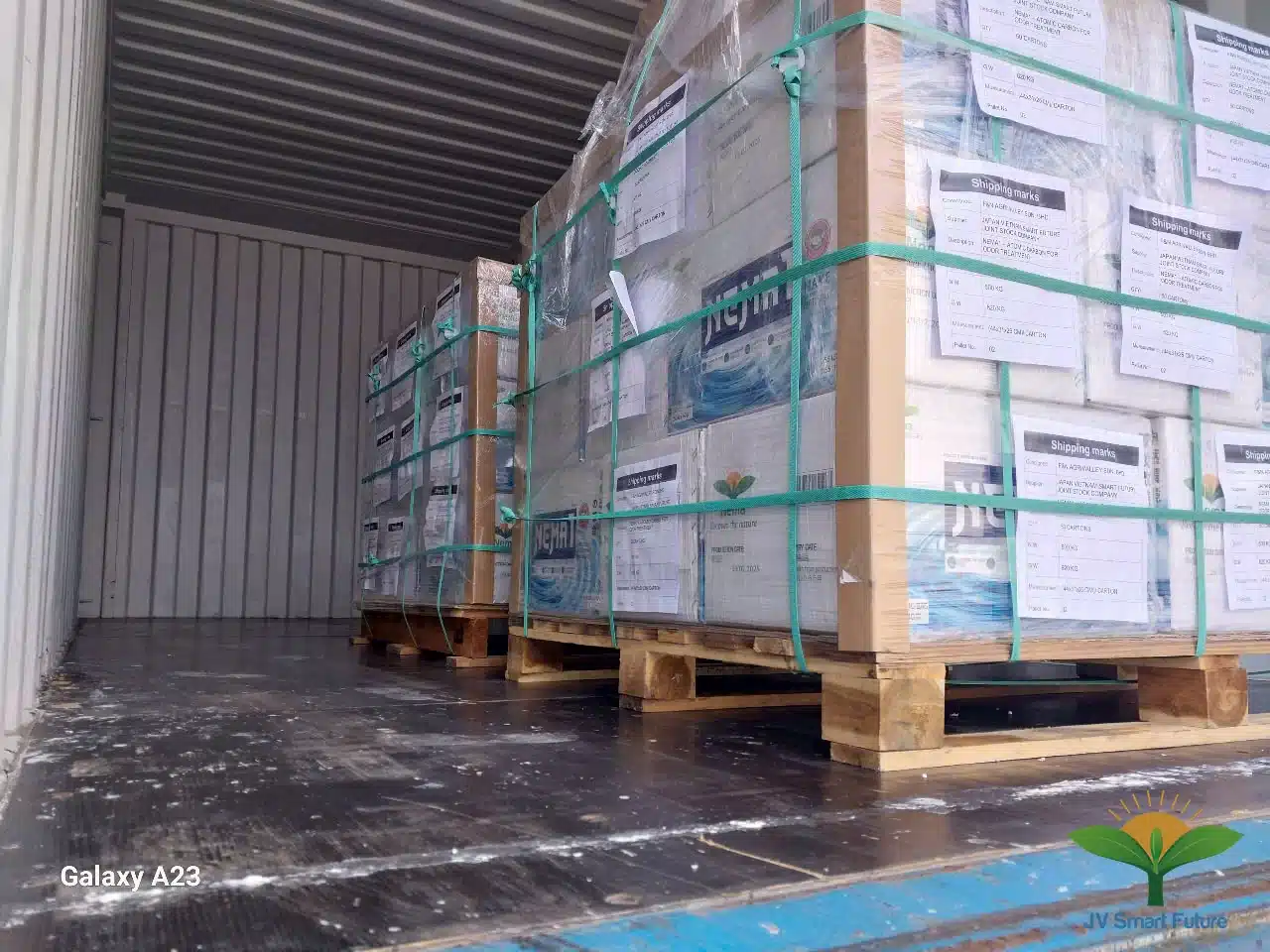
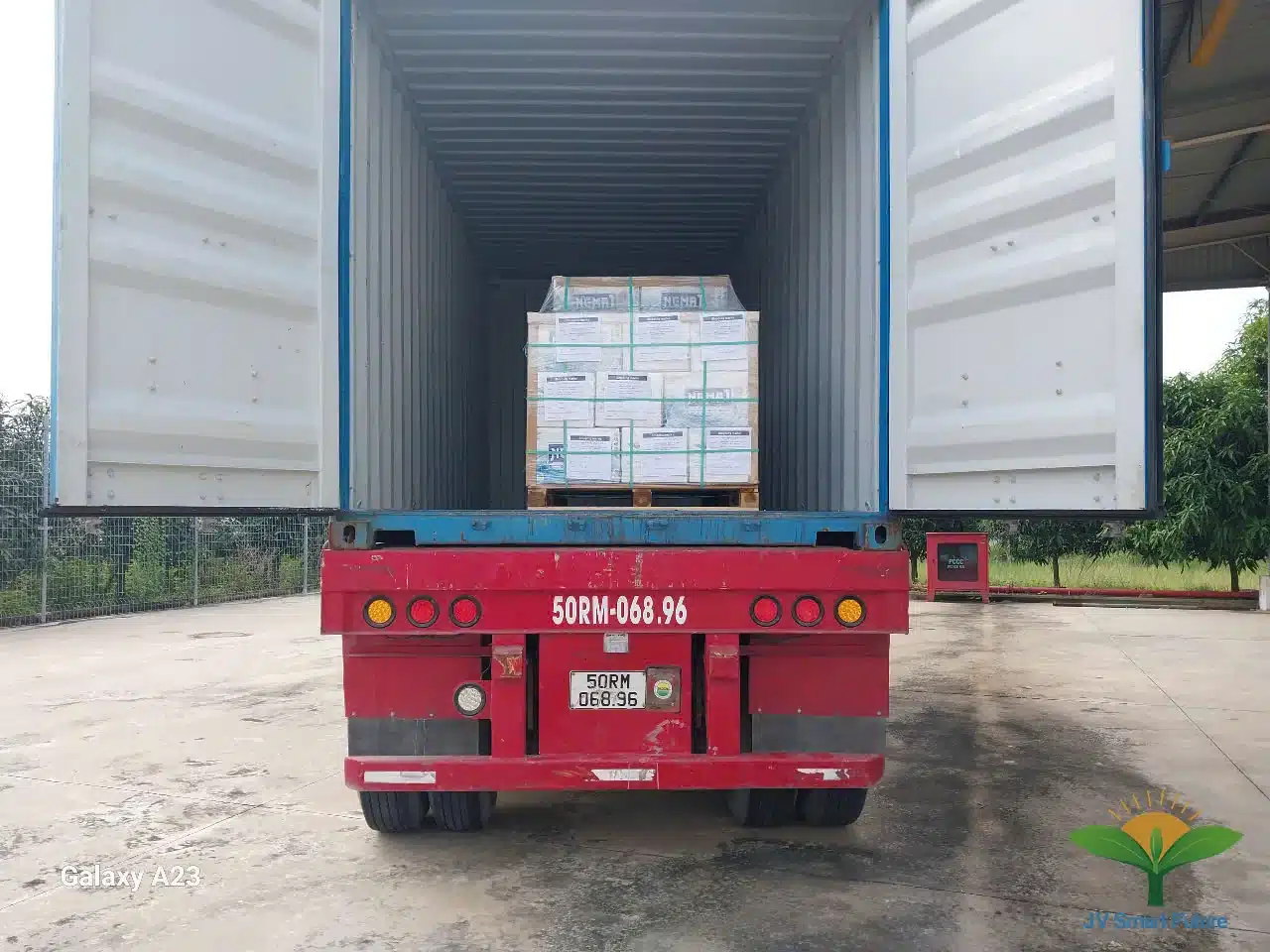
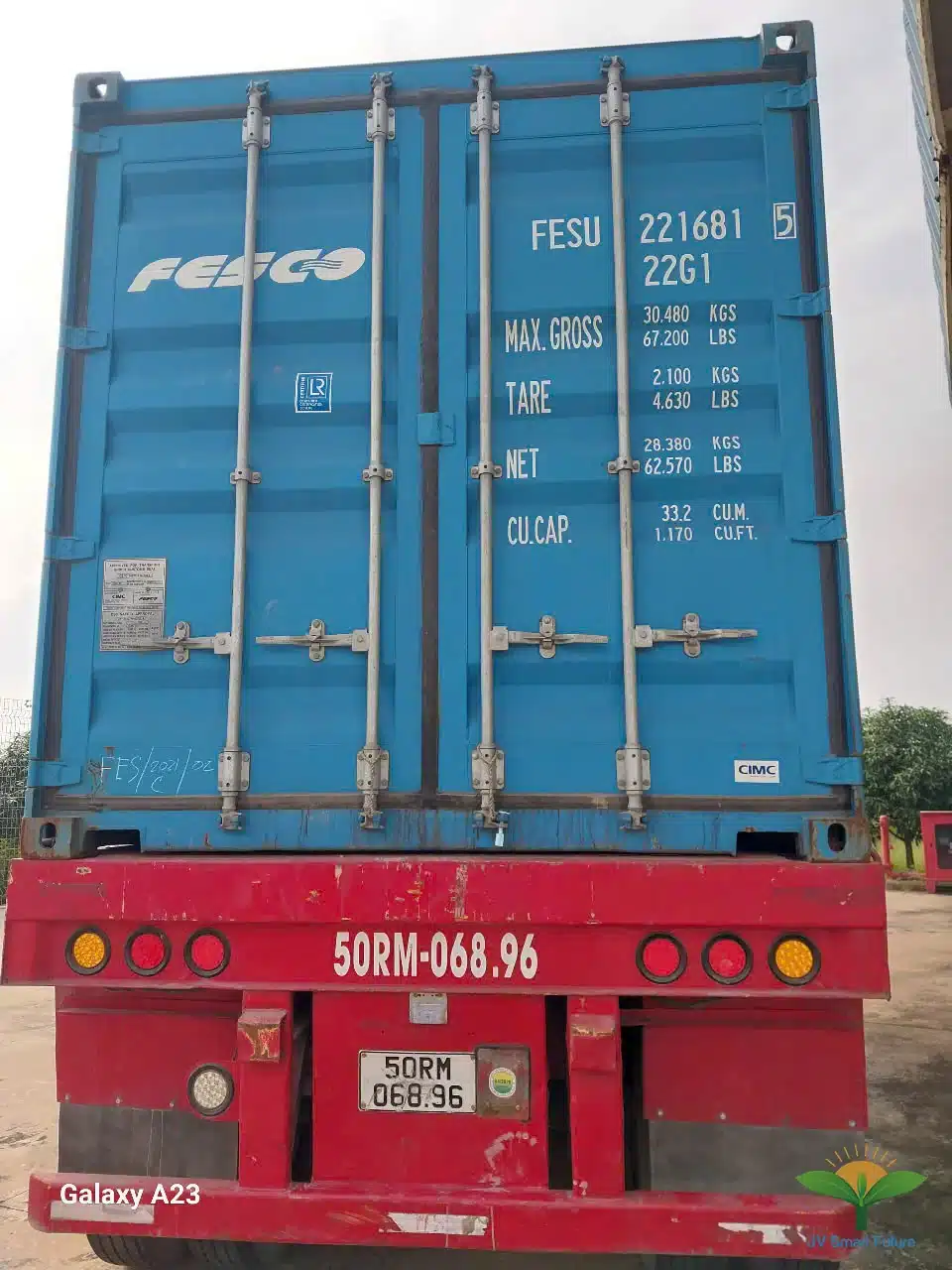
Organic Carbon NEMA1: A Breakthrough Solution in Dairy Farm Environmental Management
1.1. Decoding the Core Technology: Beyond Chemicals and Microbes
The foundation of NEMA1 is a unique technology, completely different from existing environmental treatment products on the market. This is a key factor that creates its competitive advantage and superior effectiveness. NEMA1 is defined as an organic carbon extract in atomic form (Atomic Carbon). (You can learn more about Organic Carbon here). The most fundamental and important difference is that NEMA1 is neither a chemical nor a microbial product. Instead of using chemical compounds that can leave residues or introducing foreign microbial strains into the environment, NEMA1 operates based on the intrinsic physical and chemical properties of atomic carbon.
The product’s credibility is backed by its development origin. NEMA1 is the result of nearly 20 years of research and development by scientists at the University of Tokyo. Currently, this technology has been transferred and is produced in Vietnam by JVSF, ensuring quality according to Japanese standards. Its main mechanism is a direct decomposition reaction process that breaks the bonds of organic matter and waste, effectively neutralizing odor-causing compounds like $NH_3$ at the source.
1.2. A Comprehensive Suite of Solutions for Modern Dairy Farms
NEMA1 does not just solve a single problem but has a comprehensive impact on the farm’s ecosystem:
- Air Quality Control: Spraying a diluted NEMA1 solution thoroughly eliminates odors and repels harmful insects like flies and mosquitoes, which are vectors for disease transmission.
- Animal Welfare and Health: The product is completely safe and can be added to bathwater to clean the skin or mixed in small amounts into drinking water to support the digestive system and boost the herd’s resistance.
- Enhancing the Value of the Waste Stream: This is a revolutionary application. NEMA1 transforms manure—an environmental liability—into an agricultural asset. By mixing 1-2 kg of NEMA1 with water to treat 50 tons of manure, the raw waste is converted into high-quality organic fertilizer ready for reuse in just 30-45 days.
| Table 1: Technical Profile of Organic Carbon NEMA1 | |
|---|---|
| Characteristic | Detailed Specifications |
| Product Name | Organic Carbon NEMA1 |
| Origin | Japanese Technology (Research from the University of Tokyo) |
| Composition | Organic Carbon Extract in Atomic Form (Atomic Carbon) |
| Product Form | Black, water-soluble powder |
| Key Properties | High alkalinity ($pH > 9.0$), High antioxidant properties |
| Mechanism of Action | Direct decomposition of organic matter; Not a chemical, not a microbe |
| Core Functions | Deodorization (ammonia reduction), Insect repellent (flies, mosquitoes), Water purification, Waste decomposition |
| Safety Profile | Safe for humans, animals, and plants. No negative environmental impact. |
Fraser & Neave (F&N) AgriValley: A Vision for a Sustainable Mega Dairy Farm
2.1. Fraser & Neave (F&N): A Giant’s Strategic Shift
Fraser & Neave (F&N) is one of the most successful and long-standing F&B conglomerates in Singapore and Malaysia, with a history of over 140 years. The decision to invest billions of Ringgit in the F&N AgriValley project is a strategic move to vertically integrate its supply chain, reduce dependence on imported fresh milk, and ensure food security for the region.
2.2. F&N AgriValley: A Mega-Project Integrating Technology and Sustainability
Located in Gemas, Negeri Sembilan, F&N AgriValley is a project of immense scale and ambition:
- Area: 2,726 hectares.
- Herd Size: Up to 20,000 dairy cows.
- Target Output: 200 million liters of fresh milk per year.
- Technology: The farm is designed as a “smart farming” model, with automated environmental control systems and an on-site integrated milking and processing line to ensure the highest quality.
The project broke ground in 2023 and welcomed its first batch of dairy cows in early 2025, with the first milking also scheduled for early 2025. This timeline shows that applying NEMA1 from the outset is a strategic decision, laying the foundation for a sustainable dairy farm environmental management system from the very beginning of operations.
2.3. ESG Commitment: The Foundation of All Fraser & Neave (F&N) Operations
The success of AgriValley is measured not only by output but also by its adherence to strict Environmental, Social, and Governance (ESG) standards. Fraser & Neave (F&N) has publicly stated clear goals:
- Waste Management: Reduce solid waste sent to landfills by 30% by 2025.
- Circular Economy: Pursue a “zero discharge, zero waste, and zero landfill” ambition, committing to converting 100% of industrial sludge from milk production into organic fertilizer.
- Climate & Emissions: Develop a specific decarbonization strategy for the AgriValley project and report according to international standards like TCFD.
These commitments create both pressure and an opportunity for a solution like NEMA1 to demonstrate its strategic value.
The Perfect Synergy: Operating a Circular Economy at F&N AgriValley with the NEMA1 Solution
3.1. The Environmental Challenge of a 20,000-Cow Herd
A herd of 20,000 cows produces thousands of tons of waste daily. Without an effective dairy farm environmental management system, this would be an environmental disaster, causing water pollution and emitting large amounts of greenhouse gases (methane, $N_2O$). For a major brand like Fraser & Neave (F&N), the reputational risk is unacceptable.
3.2. NEMA1: The Key Link Activating the Circular Economy
NEMA1 is not just a treatment solution but the enabling technology that allows Fraser & Neave (F&N) to realize its circular economy strategy at AgriValley. It creates a perfect closed-loop system:
- Waste from dairy cows is collected.
- NEMA1 treats the waste, turning it into high-quality organic fertilizer.
- The organic fertilizer is used to grow corn and other feed crops on-site (F&N aims for 40% self-sufficiency in feed supply).
- The feed crops then become a source of nutrition for the herd, closing the loop.
This model not only solves environmental problems but also brings significant economic benefits: reducing waste treatment costs, decreasing reliance on imported feed, and enhancing operational stability. This is the clearest evidence that investing in dairy farm environmental management is also an investment in business efficiency.
| Table 2: Strategic Alignment Matrix – NEMA1 Solution and F&N’s ESG Goals | |
|---|---|
| Fraser & Neave (F&N)’s ESG Goal | Direct Contribution of NEMA1 |
| “Reduce solid waste sent to landfill by 30% by 2025” | Enables 100% conversion of manure into organic fertilizer, eliminating the need for landfilling. |
| “Integrate green technology and circular principles” | Serves as the core technology for the closed-loop system: waste → fertilizer → feed crops → dairy cows. |
| “Reduce overall carbon footprint” | Reduces GHG emissions (ammonia, methane) from manure and lowers emissions from feed transportation. |
| Commitment to animal welfare | Creates a clean, fresh, and insect-free living environment, directly improving the welfare and productivity of the herd. |
Affirming a Global Position: NEMA1 – The Key to Sustainable Agriculture
4.1. Partnership with F&N: A “Seal of Quality” for Industrial-Scale Capability
Being chosen by a multinational corporation of Fraser & Neave (F&N)‘s stature for a strategic mega-project is the strongest endorsement of NEMA1’s quality, effectiveness, and scalability. This is practical proof, more persuasive than any certification, that NEMA1 is ready for deployment on a global industrial scale. It confirms NEMA1 as a leading solution for the challenge of dairy farm environmental management worldwide.
4.2. Towards International Organic and Sustainability Standards
The application of NEMA1 creates a farming system that fully aligns with the core principles of organic agriculture: no synthetic chemicals, a focus on soil health, and a closed-loop nutrient cycle. The organic fertilizer produced from NEMA1 is an ideal input for farms seeking prestigious certifications like USDA Organic or EU Organic. Scientific studies have confirmed that adding organic matter from treated manure significantly increases soil organic carbon (SOC), a key indicator of fertility and carbon sequestration capacity, which helps combat climate change.
Conclusion: The Future of Sustainable Livestock Farming Has Begun
The partnership between JVSF, the provider of the Organic Carbon NEMA1 solution, and Fraser & Neave (F&N) is more than just a commercial transaction. It is a blueprint for the future, a living demonstration that large-scale industrial production and deep environmental responsibility can go hand-in-hand. Through the application of advanced technology, the complex problem of dairy farm environmental management has been solved comprehensively, effectively, and in a way that generates circular economic value.
The quality of NEMA1, with its Japanese technological foundation, has been affirmed by solving challenges for one of the world’s most sophisticated food producers. The global export journey of NEMA1, beginning in Malaysia with the strategic partnership between JVSF and Fraser & Neave (F&N), is opening a new chapter for a truly sustainable global agricultural system.















